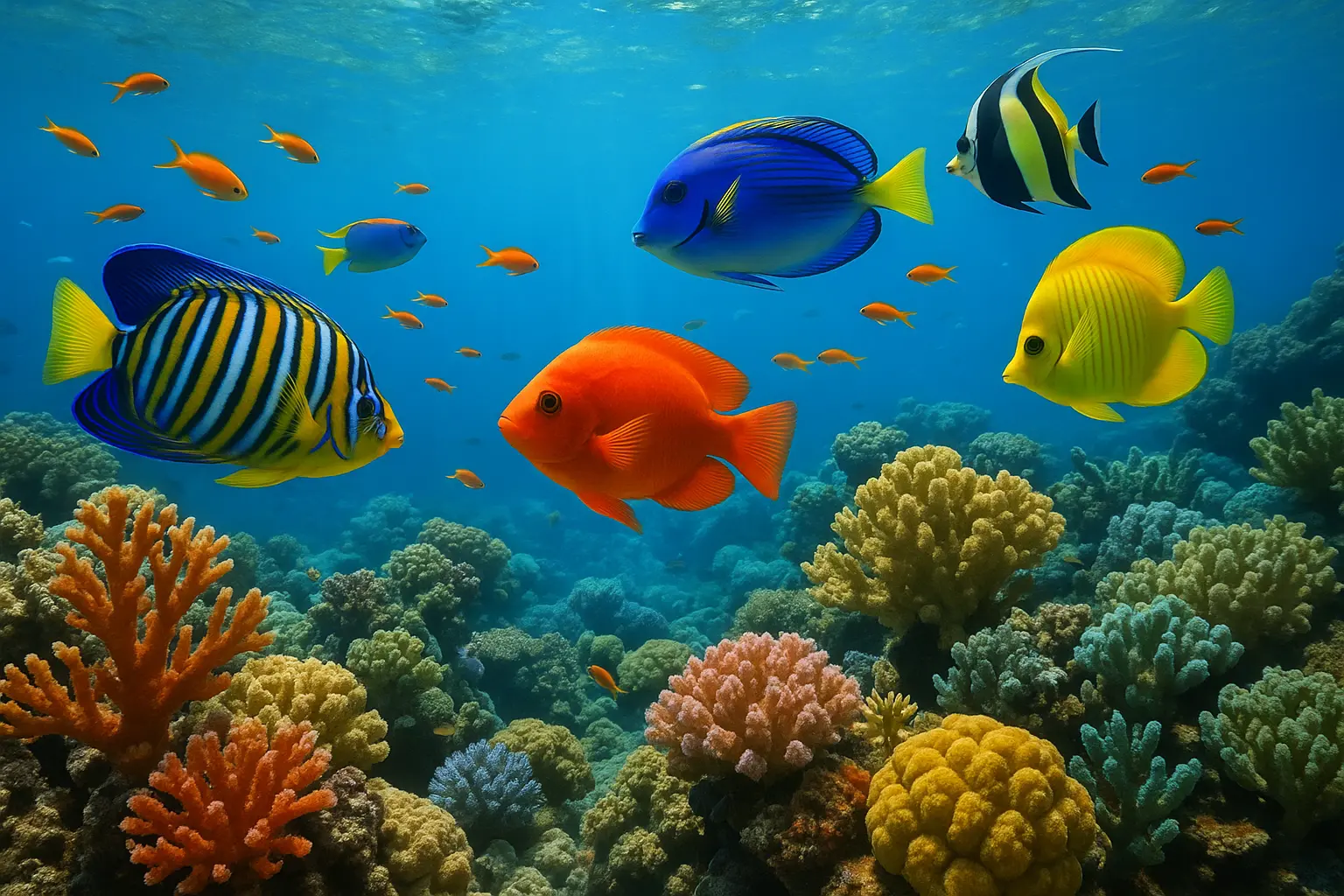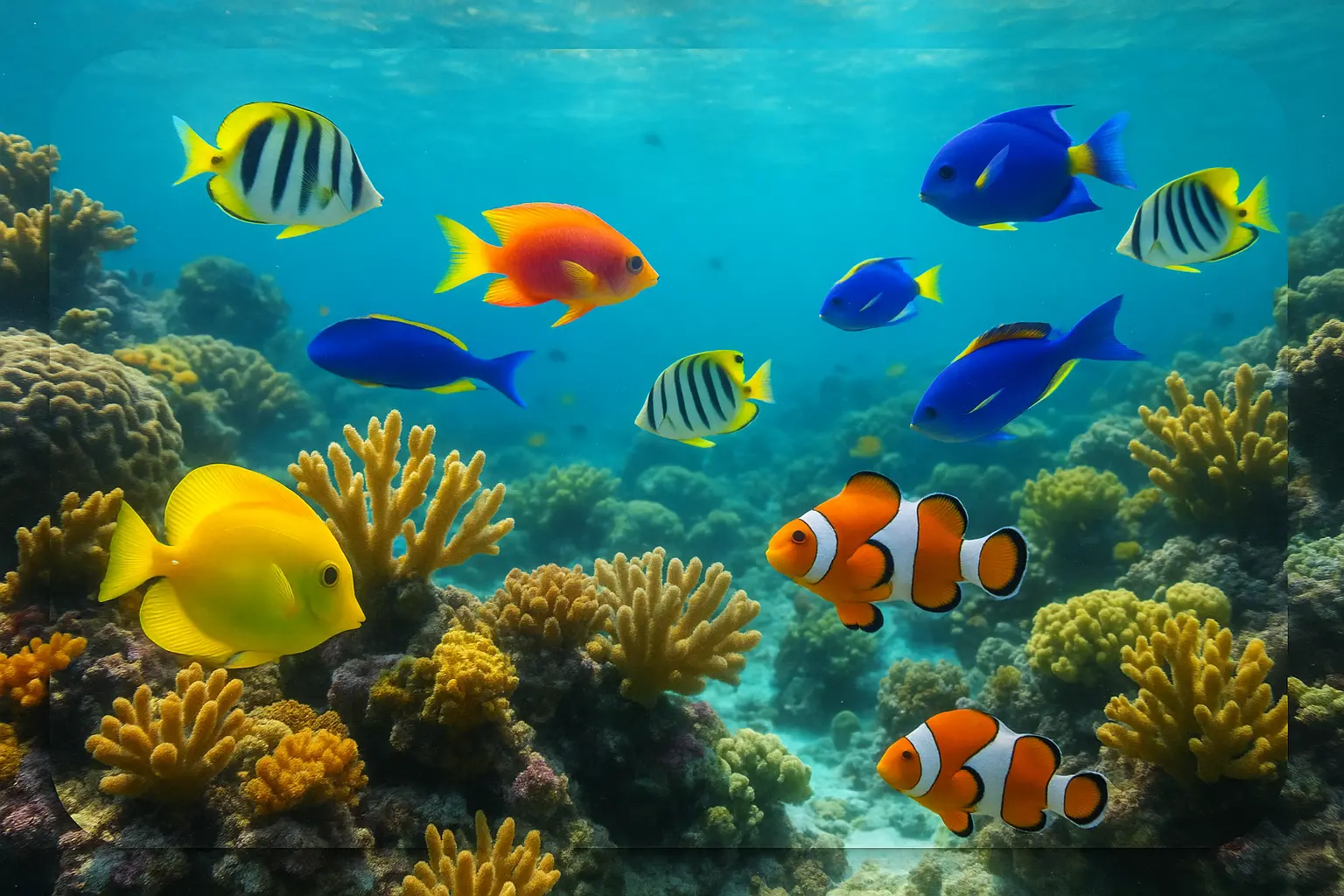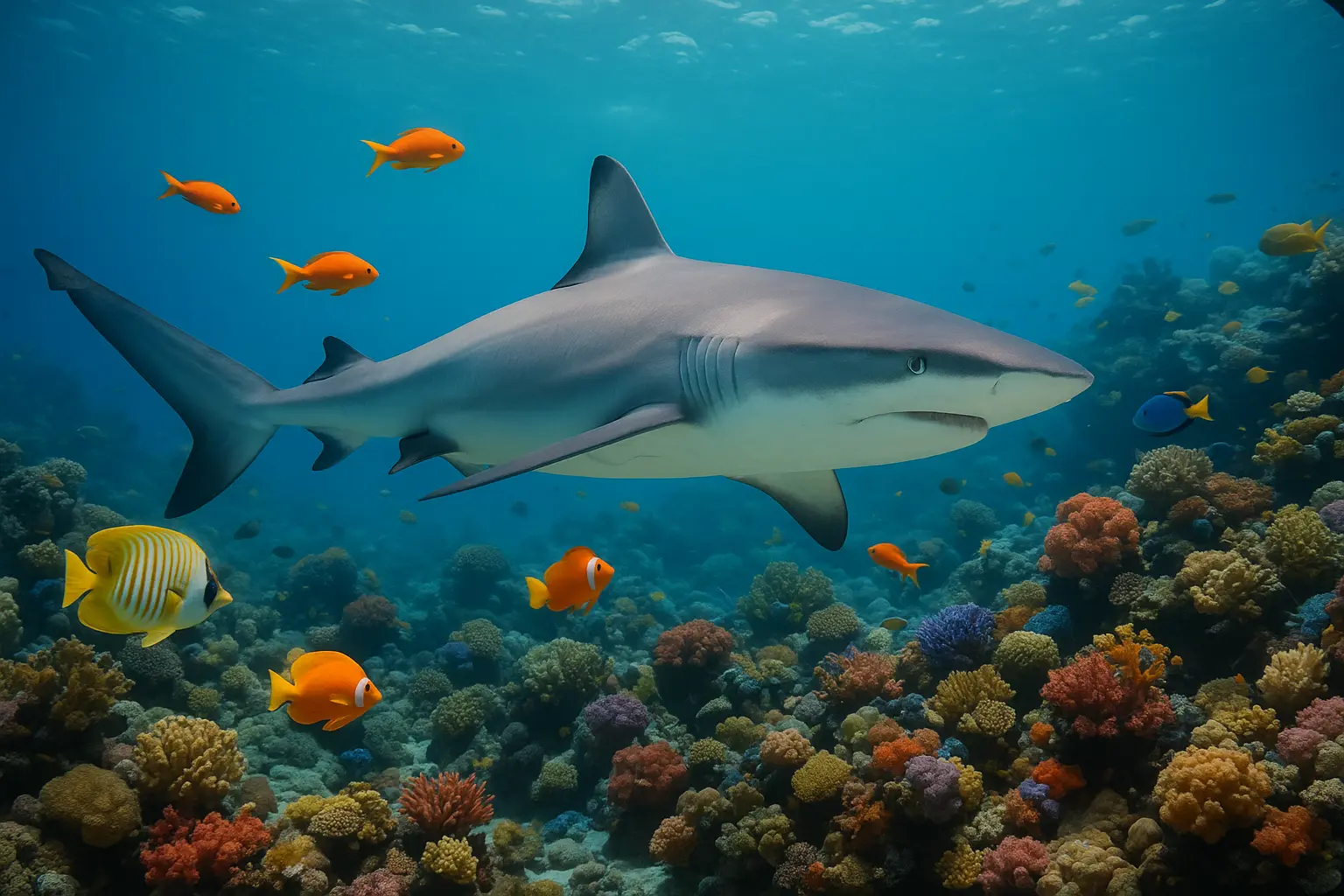Join us on our underwater adventure!
Fish are more than just the inhabitants of our oceans, rivers and lakes, they are a vital part of our planet and a source of endless wonder. From the shimmering scales of a guppy to the majestic whale shark, the variety of fish is incredible. They live in almost every aquatic environment imaginable and come in all shapes, colours and behaviours.
Why are fish so cool? Maybe it’s their silent, flowing movements, their colours that paint the underwater world or the complex lives they lead beneath the surface. This website is a small window into their world, a peek into what makes them so special and how we can help and care for them.


Meet Some Fish
Let’s get to know a few popular fish species, each with its own special charm and fun facts.
Goldfish (Carassius auratus)
Interesting Stuff:
- Contrary to popular belief, goldfish can live for many years – some even over 20 years with proper care!
- They were first domesticated in ancient China over a thousand years ago.
- Goldfish have great memories and can even be trained to do tricks.
Betta Fish (Betta splendens)
Interesting Stuff:
- Also known as Siamese Fighting Fish, Bettas are famous for their colours and flowing fins, especially in males.
- They are labyrinth fish, meaning they can breathe air thanks to a special organ. This means they can survive in low oxygen water.
- Male Bettas are very territorial and will fight other males, so they must be kept separate.
Clownfish (Amphiprioninae)
Interesting Stuff:
- Clownfish have a symbiotic relationship with sea anemones. They are immune to the anemone’s stinging tentacles and find shelter among them.
- All clownfish are born male. If the dominant female of a group dies, the largest male will change sex to become the new female.
- They are not strong swimmers and rarely venture far from their anemone.

Happy Fish, Happy Home: Basic Care Tips
Keeping fish as pets can be a blast. Here are some basic tips to keep your aquatic friends happy:
- Choose the Right Tank Size: Bigger is often better. Research the adult size of your fish and provide enough space to swim. Overcrowding is a common mistake.
- Water Quality is Key: Regular water changes are essential. Use a water conditioner to remove chlorine and other nasties from tap water. Test your water parameters (ammonia, nitrite, nitrate, pH) regularly.
- Proper Filtration: A good filter will keep the water clean by removing waste and circulating water. Clean your filter media as recommended, but don’t replace it all at once to preserve the good bacteria.
- Appropriate Diet: Feed your fish high quality food for their species. Don’t overfeed; a small amount once or twice a day is usually enough.
- Environment: Provide hiding spots like plants (real or artificial) and decorations. Make sure the water temperature is right for your fish species using an aquarium heater if needed.
- Watch Your Fish: Daily observation will help you spot early signs of illness or stress like changes in appetite, behaviour or appearance.
- Quarantine New Fish: Before adding new fish to your main tank, quarantine them in a separate tank for a few weeks to make sure they are healthy and don’t bring diseases.
Remember, every fish species is different. Always research the specific needs of any fish you plan to keep!